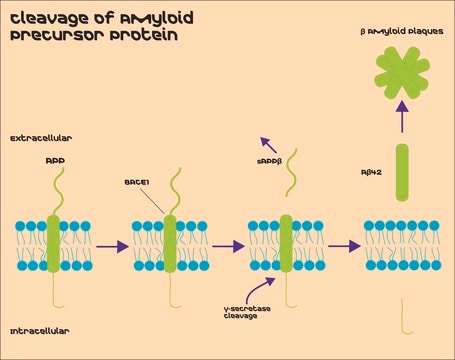SRP0203
Peroxiredoxin II Active human
recombinant, expressed in baculovirus infected insect cells, ≥80% (SDS-PAGE)
Synonym(s):
PRDX2, PRP, Thioredoxin-dependent peroxide reductase 1, NKEF-B, Natural killer cell-enhancing factor B, TDPX1, Thiol-specific antioxidant 1, Thioredoxin peroxidase 1
About This Item
Recommended Products
biological source
human
recombinant
expressed in baculovirus infected insect cells
Assay
≥80% (SDS-PAGE)
form
aqueous solution
specific activity
≥149 pmol/min-μg
mol wt
22.7 kDa
packaging
pkg of 100 μg
concentration
>0.02 mg/mL
technique(s)
cell based assay: suitable
NCBI accession no.
UniProt accession no.
shipped in
dry ice
storage temp.
−70°C
Gene Information
human ... PRDX2(7001)
General description
Peroxiredoxin 2 (PRDX2) is a typical peroxiredoxin, with 2-cysteine (Cys), a catalytic Cys51 and a resolving cysteine Cys172. Peroxiredoxins are peroxides reducing enzymes, and 2-Cys Prx subfamily contains four members in mammals, including PRDX1-4. PRDX2 is the predominant peroxidase present in mammalian erythrocytes, and its nitrated form is present in brains of patients with early Alzheimer’s disease.
Application
Biochem/physiol Actions
Physical form
Preparation Note
Storage Class Code
10 - Combustible liquids
WGK
WGK 1
Flash Point(F)
Not applicable
Flash Point(C)
Not applicable
Regulatory Listings
Regulatory Listings are mainly provided for chemical products. Only limited information can be provided here for non-chemical products. No entry means none of the components are listed. It is the user’s obligation to ensure the safe and legal use of the product.
Cartagena Act
Cartagena Act Listed
JAN Code
SRP0203-100UG:
Certificates of Analysis (COA)
Search for Certificates of Analysis (COA) by entering the products Lot/Batch Number. Lot and Batch Numbers can be found on a product’s label following the words ‘Lot’ or ‘Batch’.
Already Own This Product?
Find documentation for the products that you have recently purchased in the Document Library.
Articles
Oxidative stress is mediated, in part, by reactive oxygen species produced by multiple cellular processes and controlled by cellular antioxidant mechanisms such as enzymatic scavengers or antioxidant modulators. Free radicals, such as reactive oxygen species, cause cellular damage via cellular.
Our team of scientists has experience in all areas of research including Life Science, Material Science, Chemical Synthesis, Chromatography, Analytical and many others.
Contact Technical Service